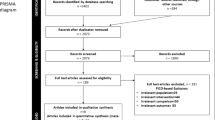Abstract
Study design Retrospective cohort study.
Cohort selection and data analysis In total, 89 implants were placed in 34 patients (19 men and 15 women; average 62.1 years of age) using computer-guided implant surgery with cone beam computed tomography (CBCT). All patients included in this study were adults and the computed-guided implant surgery was planned according to a digital guide protocol based on CBCT. Group 1 patients received the implants with the guide and flapped surgical approach, Group 2 with the guide and flapless approach. Group 3 was the drop-out group which included other patients in who the implant could not be placed according to the guide. CBCT data from before and after the surgeries were superimposed to evaluate the accuracy of implant positioning among all the groups. The differences in distance of the entry point (deviation distance) and in the degree of the insertion angle (deviation angle) were measured on the superimposed CBCT. Statistical analysis was performed with SPSS software and an independent sample t-test was done to analyse the difference of measurements among the groups.
Results The authors observed greater accuracy in Group 2 in terms of deviation distance and angulation when compared to Group 1. The deviated position of the implant fixtures was greater in the drop-out group when compared to the guided groups in terms of the displacement of entrance point and the degree of insertion.
Conclusions The authors concluded that flapless guided implant surgery is more accurate than flap guided implant surgery. The results of this study can be useful to clinicians in making decisions between flapless surgical approach and flapped approach when using a guide for implant placement.
This is a preview of subscription content, access via your institution
Access options
Subscribe to this journal
Receive 4 print issues and online access
$259.00 per year
only $64.75 per issue
Buy this article
- Purchase on Springer Link
- Instant access to full article PDF
Prices may be subject to local taxes which are calculated during checkout
Similar content being viewed by others
References
Al Yafi F, Camenisch B, Al-Sabbagh M. Is digital guided implant surgery accurate and reliable? Dent Clin North Am 2019; 63: 381-397.
D'Haese J, Ackhurst J, Wismeijer D, De Bruyn H, Tahmaseb A. Current state of the art of computer-guided implant surgery. Periodontol 2000 2017; 73: 121-133.
Carosi P, Lorenzi C, Lio F et al. Accuracy of Computer-Assisted Flapless Implant Placement by Means of Mucosa-Supported Templates in Complete-Arch Restorations: A Systematic Review. Materials (Basel) 2022; 15: 1462.
Author information
Authors and Affiliations
Ethics declarations
The author declares no conflicts of interest.
Rights and permissions
About this article
Cite this article
Subramani, K. Is computer-guided implant placement with a flapless approach more accurate than with a flapped surgical approach?. Evid Based Dent 23, 110–111 (2022). https://doi.org/10.1038/s41432-022-0813-2
Received:
Accepted:
Published:
Issue Date:
DOI: https://doi.org/10.1038/s41432-022-0813-2
This article is cited by
-
A systematic review of the accuracy of digital surgical guides for dental implantation
International Journal of Implant Dentistry (2023)



